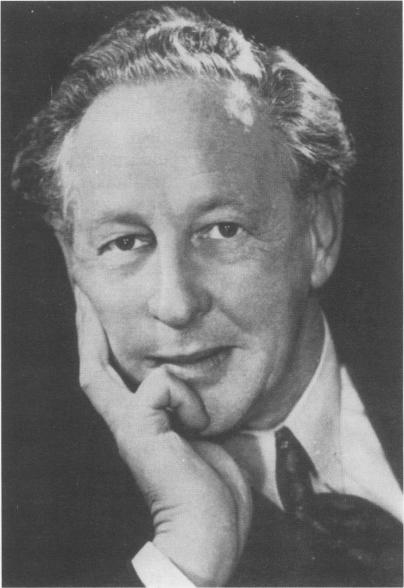The complaint of Read’s critics is that his method, and the fervent faith the mothers have in both the method and in Read himself, challenge the way they practice medicine and the validity of the profession of obstetrics itself, at times devolving into direct attacks such as Read’s comments on “meddlesome midwifery”. Read says, “Our evolution must develop on the psychosocial level, if at all, and, therefore, the science of obstetrics, in the teachings of natural childbirth, by the use of the natural or physiological equipment, by which we have attained our present relative pre-eminence, is more likely to preserve a progressive evolution than the presumptuous interference and mutilation of the products of the original and successful design.”[1]
In other words, Read believes that God’s design in pregnancy and birth is something that ought not to be manipulated or controlled by physicians. This, with good reason, encouraged criticism.
According to Moscucci, Read’s “Medical colleagues criticized the scientific basis of natural childbirth and its suitability to hospital practice.”[2] In 1962 Fielding writes, “Doctors today are warning each other that the Read method, its variations, and the teachings of other theorists that prenatal ‘preparation’is a substitute for medical assistance, have created new anxieties about childbirth that are potentially more harmful than the old ones. Whereas an ‘unprepared’ woman might once have been unduly frightened of the pain of labor, today’s ‘Natural Childbirth’ patient may learn to fear the ‘evils’ of medication instead.”[3] Fielding tells us that this fear of medication or fear of the medical institution is damaging.
Nevertheless, Read believes, “Motherhood offers all women who have the will and the courage to accept the holiest and happiest estate that can be attained by human beings.”[4] If birth is natural and women can attain their highest state of being as mothers without fear, pain or medical intervention through the use of Read’s method, what value has an obstetrician, or any medical provider in the case of a perfectly normal, physiologic experience?
Read also antagonizes his colleagues with vitriolic rebukes to their criticisms. From a letter to the editor of the British Medical Journal in June 1958, Read says, “[…] draw attention to the cult of interference which has become the priority danger of childbirth […] Early interference in obstetrics, without clinical indication, is prompted by ignorance, fear or convenience. Inadequate clinical experience beget doubts and anxieties.”[5] He goes on to say “Familiarity with the natural and physical law has enabled us to explain, and so avoid, the cause of many defects in cultural reproduction. Observations on women already made pathological by interference may demonstrate the details of disturbance but will only complicate the search for causes.”[6]
Here, he dismisses his colleagues’ research efforts with a flip comment about how they, the physicians, have caused problems during labor and birth with their meddlesome behaviors. Read may be correct in this matter, but his language is off putting to those to whom it is addressed.
The righteous indignation and caustic language Read uses fuels the belief that Read is a zealot, rather than a medical professional, as depicted by Fielding.[7] Read’s refusal to engage in proper study of his own methods and beliefs to determine if they are effective or if they cause harm further push Read to the outside fringes of the medical community.

In a letter to the British Medical Journal, R. Christie Brown and E. R. Rees write in regard to Read’s commentary on primitive peoples labors being painless and therefore so should labors of white women, “But these people belong to a pure racial type in whom the shape of the head and the types of pelves are almost a constant. We, however, have to deal with a very hybrid race… It is hardly surprising, therefore, that the slight derivation from normal is a very common occurrence. We presume that Dr. Grantly Dick-Read would not expect such cases to be ‘quite painless.’”[8] In essence, they make the claim that had Read done a modicum of research, rather than relying on his own experience, he would have come to a different, albeit racist, conclusion.
Read states in Childbirth without Fear, “My own personal and professional experience is sufficient to enable me to draw conclusions and to support them with apparently sound evidence. The value of a theory lies ultimately in the results obtained by its practical implementation.”[9] This implies that his faith over that of empirical data, is what is truly valuable. The faith which he packages and sells to his clientele.
This goes as far as South Africa refusing Read a medical license and Read being sanctioned for advertising in Britain.[10] Read’s book sales and speaking engagements were viewed as advertising. Physicians were not permitted to do such things by their governing body.
It was Read’s dogmatic beliefs that render him a martyr to his cause and as an outcast from his community of physicians. Read essentially asked his scientifically minded, medical colleagues to take him at his word, on what he has witnessed and the revelation he has had about Natural Childbirth than based on empirical evidence. Read’s adamant refusal to conduct scientific study and rely solely on what his own eyes witness and the testimonial of the mothers who’ve had natural birth with Read’s method are at best off-putting and at worst ostracizing for Read. As a staunch defender of his method, he vigorously waved away those critical of his method and reinforced his disinterest in doing research beyond what his own eyes told him. Yet, even with all the fight and bluster, the women who engaged with Read and his method adored him.
Next up: Testify – Mothers Venerate Read and Extol his Method.
[1]Read, G. D. (1942), Childbirth without fear, p. 23
[2]Moscucci, O. (2002), Holistic Obstetrics: the origins of “natural childbirth” in Britain, p. 171
[3]Fielding, W. L. (1962), The childbirth challenge: commonsense vs. “natural” methods, p 57
[4]Read, G. D. (1942), Childbirth without fear, p. 6
[5]Read, G. D. (1958), The British Medical Journal, Induction of Labor, p. 1478
[6] Ibid.
[7]Fielding, W. L. (1962), The childbirth challenge: commonsense vs. “natural” methods, pp. 55 – 59
[8]Brown, R. C and Rees, E. R., (1945), The British Medical Journal, p. 924
[9] Read, G. D. (1942), Childbirth without fear, p. 18
[10] Thomas, A.N. (1957), Doctor Courageous, p. 192-193
Become a Patron!

